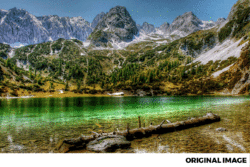revnart
Power User
- Messages
- 362
- Likes
- 327
Hi, after "some" time I comeback with question for all of you 
What methods do you use/know to create luminosity map (mask) - full one, not only darks, midtones or highlights?
I'm interested especially in ways different than:
• HSB B channel
• HSL L channel
• RGB Desaturate
• RGB Composite channel selection
• RGB Layer in luminosity blend mode
• LAB L channel
• LAB Composite channel selection
• LAB Desaturate
• LAB Layer in luminosity blend mode
• Grayscale mode
• Calculations > gray > normal
I'm making some "private-research" because of completely different results depending on techniques used.
Will be very happy if you could share your techniques/ideas.
Thank you
What methods do you use/know to create luminosity map (mask) - full one, not only darks, midtones or highlights?
I'm interested especially in ways different than:
• HSB B channel
• HSL L channel
• RGB Desaturate
• RGB Composite channel selection
• RGB Layer in luminosity blend mode
• LAB L channel
• LAB Composite channel selection
• LAB Desaturate
• LAB Layer in luminosity blend mode
• Grayscale mode
• Calculations > gray > normal
I'm making some "private-research" because of completely different results depending on techniques used.
Will be very happy if you could share your techniques/ideas.
Thank you
Last edited:

